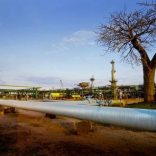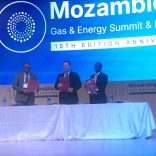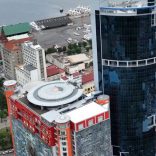Sasol expects profit rebound on higher chemical prices and lower impairment
More on the new gas-fired power station for Inhambane and its impact on EDM – AIM report

Noticias (File photo) / Sasol
A new gas-fired power station, capable of generating 400 megawatts of electricity, will be built in the southern Mozambican province of Inhambane, the Minister of Mineral Resources and Energy, Leticia Klemens, announced on Thursday.
Construction will begin next year and should be concluded by 2021. The source of power is the natural gas from the Temane and Pande gas fields in Inhambane, exploited by the South African petro-chemical giant Sasol. The power station, plus the transmission line to carry the electricity from Temane to Maputo, will cost 1.2 billion US dollars, according to a report in Friday’s issue of the independent daily “O Pais”.
On Thursday Sasol met with the publicly owned electricity company EDM, and with Hidroelectrica de Cahora Bassa (HCB), which operates Mozambique’s largest electricity asset, the Cahora Bassa dam on the Zambezi river. Several international partners were also present at the meeting, discussing the financial structure of the Inhambane project.
Klemens said the transmission line will be run as a partnership between EDM and HCB, while the power station will be “a public-private partnership between Sasol and EDM”. Mechanisms would be defined for other interested partners to participate.
EDM chairperson Mateus Magala said the transmission line will be ready six months before the power station, since it is the line to Maputo that will make the whole project viable. This transmission line would become the first stage in the “backbone” of the country’s electricity grid, running from the Zambezi Valley to the far south.
This “backbone”, discussed for many years, would end the embarrassing situation whereby the Cahora Bassa power that EDM buys from HCB to supply the south of the country does not go there directly, but passes through South Africa.
The African Development Bank (ADB) has expressed an interest in financing the project, but wants to see whether it can be profitable, before taking a final decision. “What we can invest will depend on the revenue this project can generate, but we are interested in taking part”, said the ADB representative in Mozambique, Joseph Ribeiro.
The list of potential funding agencies also includes the World Bank, Norway, the German development bank, KfW, the Japanese International Cooperation Agency (JICA), and the French Development Agency (AFD).
Diversify
Klemens said the Inhambane power station is part of the strategy to diversify sources of energy. There are already two gas-fired power stations at Ressano Garcia, on the South African border, which can generate 295 megawatts between them. Adding the projected 100 megawatt combined cycle power plant (using both gas and a steam turbine) in Maputo, the 40 megawatt Kuvaninga power station at Chokwe, in the Limpopo Valley, and now the Inhambane project, this means that within the next few years a total generating capacity of 835 megawatts will be available in southern Mozambique.
Klemens said this would bring to fruition the idea of “developing a Southern Regional Electricity Generating Park”.
For EDM, the Inhambane project comes as a lifeline to rescue it from major financial difficulties, since it would greatly increase EDM’s revenue, and relieve it of its current need to import electricity from the South African company Eskom.
Magala said that currently EDM invoices its clients for about half a billion dollars a year. “By adding a further 400 megawatts, we can increase our revenue to a billion dollars or more a year”.
The current electricity demand in Mozambique is 900 megawatts (excluding the consumption of the Mozal aluminium smelter). EDM acquires 750 megawatts from domestic sources, mainly HCB, but must purchase the other 150 megawatts from Eskom, which is much more expensive.
EDM currently owes HCB 50 million dollars (part of a total EDM debt, according to “O Pais”, of 800 million dollars). Magala told the paper that EDM is confident it can pay off the debt to HCB by the end of this year. The two companies have been in discussion about a detailed strategy for paying the debt.
Electricity prices
Magala stressed that EDM’s main problem is the low price at which it is obliged to sell electricity. The average price of electricity in other southern African countries is 12.5 US cents per kilowatt-hour – but EDM sells its power at an average of 7.5 US cents per kilowatt-hour.
For Magala, it is urgent the price be increased so that it reaches the regional average of 12.5 US cents per kilowatt-hour by 2018. He pointed out that investment of around 10 billion dollars is needed in new transmission lines so that by 2030 the entire Mozambican population can have access to electricity.
Such a level of investment is clearly impossible with the current price of electricity. Raising the price, however, depends on a go-ahead from the government.













Leave a Reply
Be the First to Comment!
You must be logged in to post a comment.
You must be logged in to post a comment.